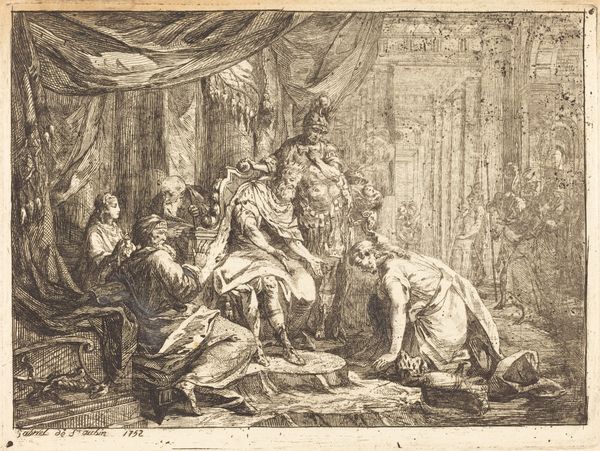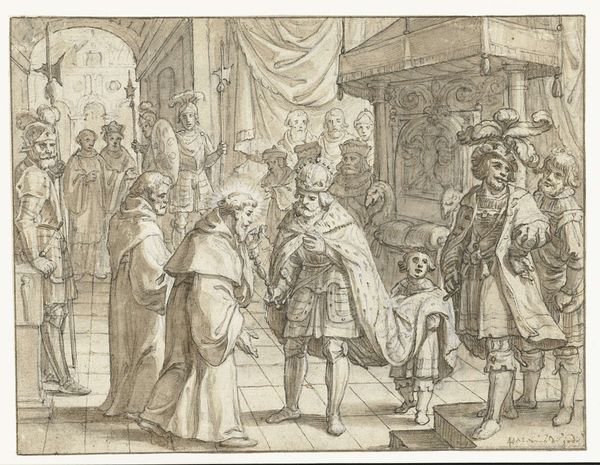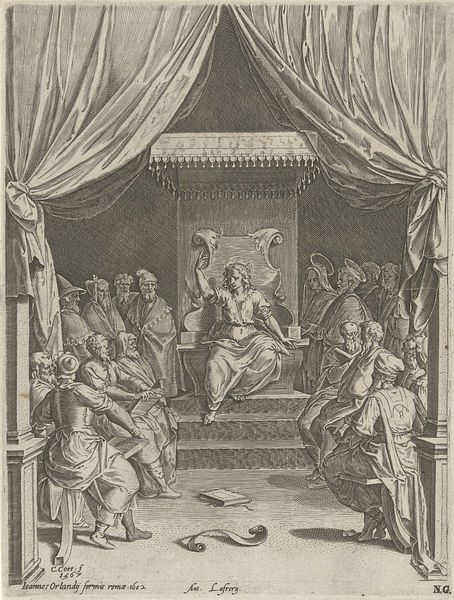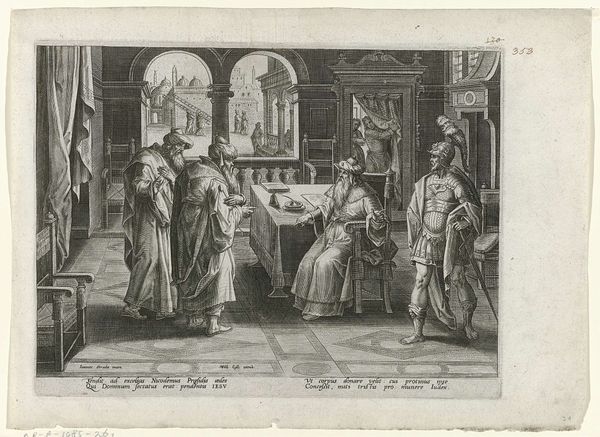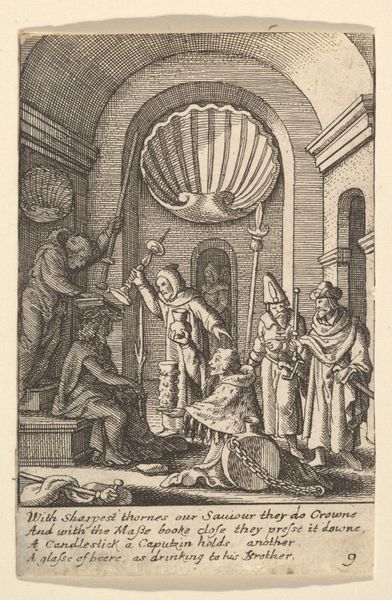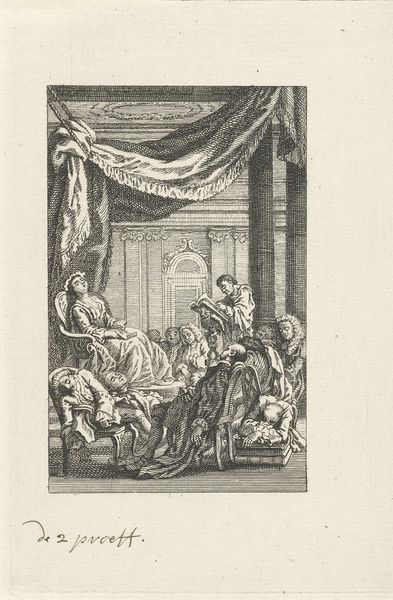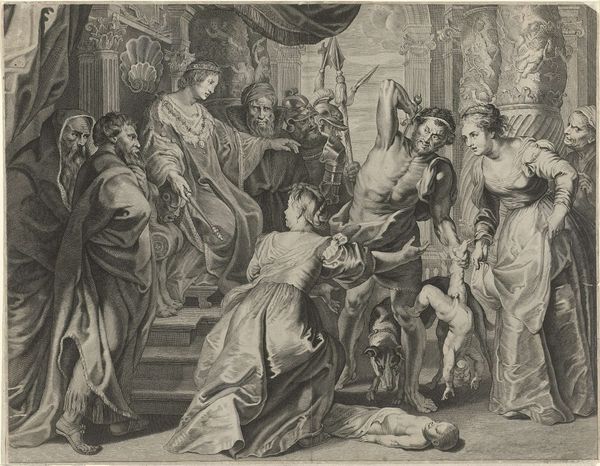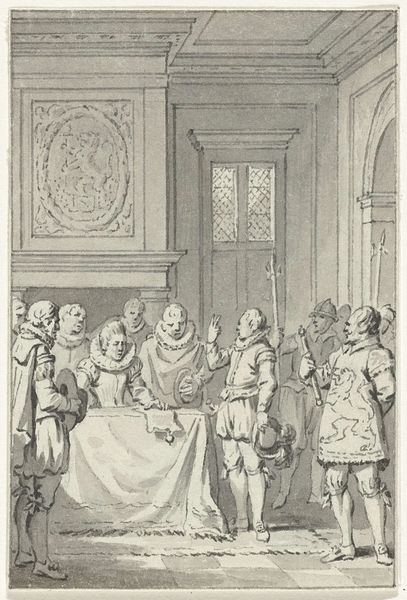
engraving
#
allegory
#
narrative-art
#
baroque
#
history-painting
#
engraving
Copyright: Public domain
This engraving by Jan Luyken depicts the gruesome death of Honoric, King of the Vandals, in 477 AD. Dominating the scene is the figure of Honoric himself, consumed by worms and lice, a stark symbol of earthly power undone by decay. Consider the motif of decay and disease, echoing through time from medieval memento mori to contemporary art. This motif speaks to the transience of life and the futility of worldly ambition. We see the gesture of Honoric’s raised arm – a desperate, futile attempt to ward off the inevitable. This gesture reappears across epochs, embodying resistance against fate, reminiscent of the damned souls in Dante's Inferno. The psychological impact of this image lies in its visceral depiction of suffering, tapping into our primal fears of mortality. It serves as a potent reminder of the cyclical nature of existence, where even kings are reduced to dust and consumed by the very creatures they once dominated. The worms and lice are not just agents of physical destruction but symbols of the inevitable triumph of nature over human vanity.
Comments
No comments
Be the first to comment and join the conversation on the ultimate creative platform.
